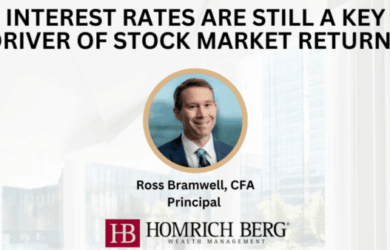By: Dave Kochamba
04/29/2020
This past weekend while social distancing at home I was looking for a comedy to watch. While searching I found Tommy Boy, one of my favorite movies from the 1990s starring Chris Farley and David Spade. While there are many hilarious scenes, one of my favorites that can be written about in a blog article is when Tommy (played by Farley) lies to Richard (played by Spade) at the airport saying he left a message that he was going to miss his flight back to his hometown. Richard then proceeds to needle him about the length of time he needed to complete his undergraduate degree.
Tommy: [gets off the airplane] Richard Hayden!
Richard: Tommy.
Tommy: Where’s my Dad? I thought he was supposed to pick me up at the airport?
Richard: He was at the airport this morning, but you weren’t on the plane.
Tommy: He said he had a surprise for me.
Richard: Maybe. I guess that’s why you should’ve called.
Tommy: I did call, earlier, when… using the phone.
Richard: Earlier? When was that?
Tommy: Er… later… When, when then I, I left a message.
Richard: A message? What number did you call?
Tommy: Two… four.. niner… five, six seven…
Richard: I can’t hear you, you’re trailing off. And did I hear a “niner” in there? Were you calling from a walkie-talkie?
Tommy: No, it was cordless.
Richard: You know what? Don’t. Not here, not now.
Tommy: Did you hear I finally graduated?
Richard: Yeah, and just a shade under a decade too. All right.
Tommy: Hey, you know a lot of people go to college for seven years.
Richard: I know. They’re called doctors
Reading this exchange doesn’t do the scene justice, so I recommend watching the clips below if you haven’t seen the movie:
https://www.youtube.com/watch?v=SWBrM117_II
https://www.youtube.com/watch?v=yKA70sI7Kt0
So at this point you may be asking how this all ties into financial planning. Well, if Tommy did attend college for seven years, hopefully his parents planned ahead for his education expenses and contributed to a 529 early in his childhood. 529 plans have received a large amount of attention over the last few years as the cost of undergraduate education has increased. Parents, grandparents, and friends and family members are looking for ways to save for this potentially significant expense. According to the College Savings Plans Network (CSPN), 529 plan assets grew 16% from the prior year to $319.1 billion as of year-end 2017, while the number of accounts rose 3% to 13.3 million. Like many financial products that have become popular, the number of 529 plans being offered to consumers has risen over time as states and investment management companies are looking to get a piece of the market. When selecting a 529 plan, consumers can open a plan through a broker or an account on their own and invest directly. Direct plans typically are the lower-cost option, as broker-sold 529 plans usually have higher annual costs, including commissions on contributions to the fund that can eat into returns.
With the number of 529 plan options available today, how should you proceed with picking a plan? We recommend reviewing state sponsored 529 plans in your state of residence. Many states (Utah, New York, Georgia, South Carolina, Connecticut and others) offer a state income-tax deduction or income-tax credit on residents’ contributions to their state’s own plans. For instance, contributions by Georgia residents to the Path2College 529 plan are deductible up to $4,000 each year per beneficiary for joint income tax filers, and up to $2,000 each year per beneficiary for all others. Georgia income tax filers also have until July 15, 2020 in order to make contributions that can be deductible for tax year 2019. Tax year 2020 contributions to the Path2College 529 plan are deductible up to $8,000 per year per beneficiary for joint filers and $4,000 per year per beneficiary for all other tax filers in the state of Georgia. Incoming rollovers from other 529 plans do not qualify as contributions eligible for the Georgia state income tax deduction.
It is also important to review a 529 plan’s fees. Some plans charge an annual maintenance fee, asset management fee, and/or administrative fee. These fees vary widely depending on the 529 plan. For instance, the Delaware College Investment Plan managed by Fidelity has fees ranging from .05% to .99% depending on the investments selected. The Hawaii 529 plan, HI529, charges a .55% plan management fee (on top of the underlying fund expenses) and a $20 fee for non-residents according to their program description. TIAA, who manages the Georgia Path2College 529 Plan, recently reduced its program management fee to .07 percent, down from .08 percent, effective last May in recognition of plan assets reaching $3 billion. The plan has no sales charges, enrollment fees, or other maintenance fees, making it among the lowest cost 529 college savings plan in the country.
A great resource in reviewing 529 plans is Morningstar’s annual 529 ratings report. Their 2019 report assigned ratings to 62 plans, which represent more than 97% of assets invested in 529 plans. They named 30 plans as the best of the bunch rating the top plans Gold, Silver, or Bronze. However, five plans received negative ratings from the Morningstar analysis, meaning they have at least one flaw that may make them worth avoiding for most college savers, such as an unstable investment team or high fees.
Now that you have some tips on what to look for in evaluating 529 plans, here’s hoping that the beneficiary of your 529 plan won’t need seven years to complete their degree like Tommy did. And if the beneficiary of your plan does need seven years or more, hopefully they have an M.D. or Ph.D. after their name. If you have any questions related to 529 plans, please contact a member of your Homrich Berg service team.













Evaluating Business Structures: The Pros And Cons
Family businesses often start small with simple business and tax structures. However, as businesses expand,…
Read More